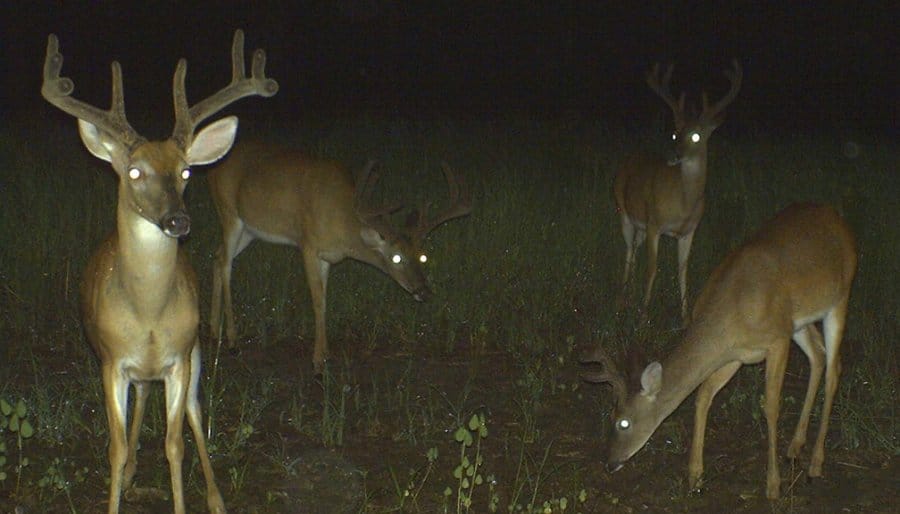If you are monitoring local whitetails during summer through the lenses of your binoculars, or through the lens of a trail-camera, you’ve probably seen what are known as “bachelor groups.” These are groups of bucks that travel together during the spring and summer and generally follow the same movement schedule of bedding and feeding. Bachelor groups may contain bucks of many different ages, including yearlings. Bucks in an individual bachelor group are usually not related to each other.
We know that bachelor groups form outside of the breeding season, when antlers are absent or growing, and when buck testosterone levels are at their annual low point. Bucks in bachelor groups get along well and even groom each other, but they still establish a basic “pecking order” within the group using aggressive physical displays, vocalizations, or sometimes hoof-flailing. As day-length begins to shorten, testosterone levels begin to rise, triggering the hardening of antlers and shedding of velvet. At this point, aggression within the group rises, and bucks begin to spar using their new antlers. Sparring is usually not serious and often involves bucks of widely differing age. As the rut approaches and testosterone continues to rise, bucks gradually become less tolerant of each other, and the bachelor groups break apart. Research has shown that the average buck begins using a larger percentage of its established home range as the rut approaches, so movement patterns and locations of each buck in a bachelor group may change radically after the group dis-bands. Thus, patterning a bachelor group may be useful where archery or firearms seasons open early enough, but the pattern will fade quickly in the pre-rut period.
There are several potential survival advantages of forming bachelor groups. Forming groups may aid in predator avoidance at a time when bucks are relatively defenseless because they do not have antlers, or when antlers are growing and vulnerable to damage. Also, bachelor groups may allow local bucks to establish a basic dominance hierarchy through mild forms of aggression, which may reduce the amount of serious fighting necessary later – when bucks can be injured critically or killed.
Of course, bachelor groups aren’t likely to be seen in areas where few bucks survive beyond 1 1/2 or 2 1/2 years of age. When harvest pressure is reduced on yearling bucks through QDM, numbers of older bucks will increase over time, increasing your likelihood of spotting a bachelor group where you hunt.
